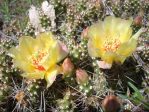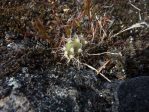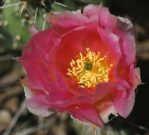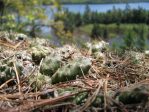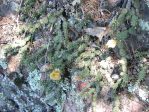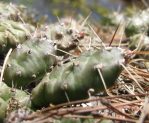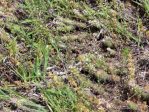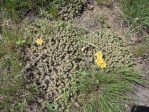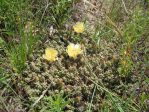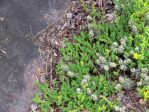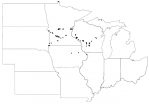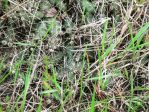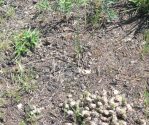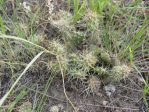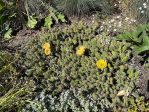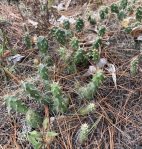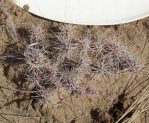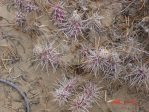(Nutt.) Haworth, Synopsis Plantarum Succulentarum 82, 1819
Herbarium; Herbarium; Herbarium; Herbarium; Herbarium; Herbarium; Herbarium; Herbarium; Herbarium (Ontario, Canada); Painting

Original Citation
What is Opuntia fragilis?
Opuntia fragilis is one of the smallest opuntias and one of the most cold-hardy. It is found throughout parts of the West and the northern Midwest. Frequently O. debreczyi is misinterpreted as O. fragilis or a hybrid of O. fragilis in the Mountain West and the Great Basin.
Details
Dr. Eric Ribbens writes:
Opuntia fragilis (Nutt.) Haw. is a small, cold-hardy prickly pear. It has pads 1 to 3 cm long and longer than wide, and spines can be longer than the pad, or short.
This Opuntia forms a sprawling prostrate mat up to 30 cm in diameter; rarely are there erect chains of more than 2 or 3 pads. The cladodes of this Opuntia are remarkable because they are ‘fragile’. They separate easily–sometimes with just a touch.
Flowers are large and yellow, with creamy greenish to reddish centers. Older plants often develop a thick rootstock at the base of the plant. Large plants can be comprised of hundreds of pads on numerous flat chains. The pads are often rather rounded instead of flat, and that it does not ever set fruit in the Midwest.”
O. fragilis is hexaploid.
Other Notes
Britton and Rose reported that O. fragilis is seldom in flower and even less often in fruit.
O. debreczyi is a small western opuntia that is about twice the height/size of O. fragilis. It is frequently misinterpreted as O. fragilis and thus distorts knowledge of the actual distribution of the species. The two species are known to occur together. Intermediates are not found.
Many garden hybrids are known. They are excellent garden or pot plants because of their small size and ability to withstand many conditions. Some are brightly colored and all are cold-hardy.

